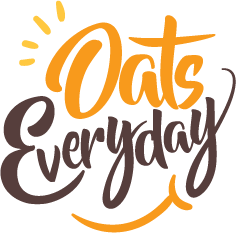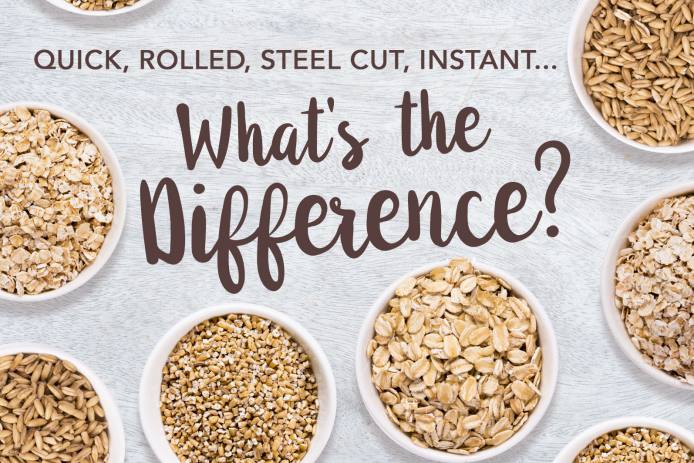Oats are one of the few whole grains you’ll find many varieties of on the grocery shelf, making them an extremely versatile ingredient. With such a wide selection available, choosing the right oat for your recipe might be a little challenging. Use this quick guide to the oats you’ll find at the store to make your decisions a little easier, and perhaps you’ll be tempted to give them each a try!
All-natural and delicious, oats – in all their forms – are a terrific way to add fiber, vitamins, minerals, and plant-protein to any diet. Here’s what to look for at the grocery store:
Rolled Oats
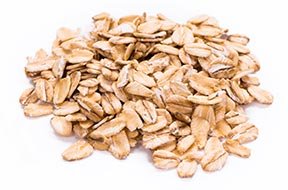
The most common oats you’ll find are rolled oats. They are also referred to as old-fashioned or regular oats. Rolled oats are whole oats which have been toasted, hulled, steamed and then rolled. These oats absorb a lot of liquid, cook fairly quickly and will hold their shape well when cooked. Rolled oats are mainstay ingredients in granola and overnight oats. Try rolled oats in our Olive Oil Granola, or in our Nutty Oaty Apple Crisp for a delightful dessert.
Cooking time: approximately 15 minutes
Quick Oats
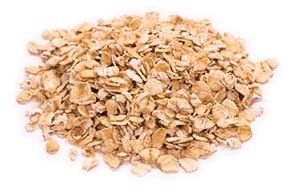
Quick oats, or “quick-cooking” oats, have been cut, steamed and rolled into thinner flakes, making them quicker to cook than rolled oats. With quick oats, you can have a hot, healthy breakfast on the table in less than five minutes, and because of their finer texture they’re frequently used in muffins, cookies and breads. For a traditional use, try quick oats in our Banana Berry Oatmeal, or for a savory main course, try our BBQ Bean and Oat Burgers.
Cooking time: approximately 5 minutes

Instant Oats
These are the oats you usually find in single-serving oatmeal packets, often with added flavoring, that you can microwave with water for a quick breakfast. They have been pre-cooked, then dried, cut and rolled for instant preparation. Instant oats are a fast and convenient way to get a healthy helping of oats on-the-go! Look for plain or “original” varieties and customize with your own flavorings and toppings for a breakfast or snack that can be prepared anywhere.
Cooking time: approximately 1 minute
Steel Cut Oats
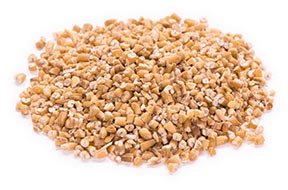
Also known as Irish oatmeal, steel cut oats have a great chewy texture and nutty flavor. Steel cut oats are whole, hulled oats that have been cut once or twice with steel blades into smaller pieces. They take a little longer to cook than rolled oats, but have a wonderful, satisfying texture. Enjoy steel cut oats for breakfast, or as an awesome alternative to other grains, like in our creamy Oat Risotto with Parmesan and Peas or this tasty shrimp and grits.
Cooking time: approximately 20 minutes
Scottish Oats
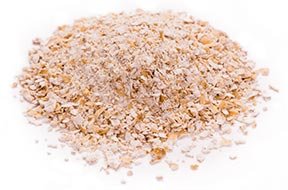
Scottish oats, or Scotch oats, are oats that have been stone ground, almost to a powder. This centuries-old process results in a creamy, hearty porridge, which cooks a little faster than steel cut oats. Oatmeal historians consider Scottish oats the “original oatmeal.”
Cooking time: approximately 10 minutes
Oat Groats

Groats are the hulled kernels of whole-grain oats, also known as hulled oats and hulled whole oats. They’re super nutritious and very chewy, making them a great substitute for rice and other whole grains. Prepare oat groats as you would pasta – simply boil in salted water until tender, then drain. Try oat groats in a pilaf like our Oat Pilaf with Walnuts, Raisins and Feta, or as a hearty ingredient in salads, like our delicious Oat Picnic Salad with Cranberries and Almonds.
Cooking time: approximately 30 – 45 minutes
Oat Flour
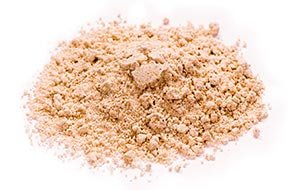
Oat flour is simply whole-grain oats, milled to a fine powder. Oat flour can be used to thicken sauces and gravies, in breading and in baked goods. Oat flour is commercially available, or can easily be made at home in a food processor or blender. To make oat flour, process rolled or quick oats to a powder, then sift. Try using oat flour made from certified gluten-free oats to make easy, gluten-free Oat Tortillas or a pizza crust.
Oat Bran
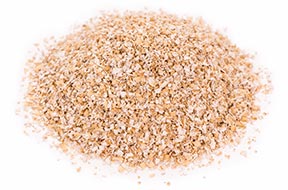
Oat bran is made from the outer layer of the hulled oat kernel and is particularly high in insoluble fiber. It can be prepared as a hot cereal or sprinkled on cold cereal, and is used as an ingredient in quick breads, casseroles and pancakes for a boost of added fiber. You can also use oat bran to boost the fiber in meat patties, and as a binder that will keep the patty light.
Gluten-Free Oats:
Oats are inherently gluten-free, but may contain traces of other gluten-containing grains, such as wheat or rye. If you are following a strict gluten-free diet, be sure to choose any of the oats above that are labeled “certified gluten-free.”
